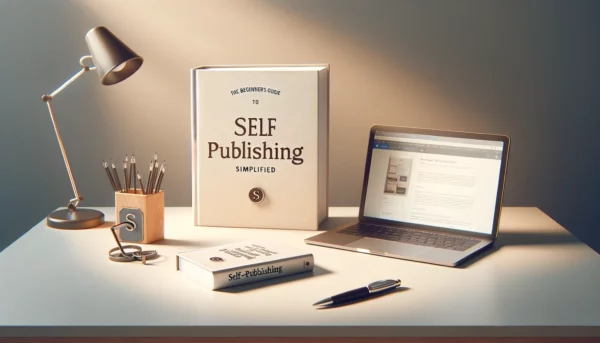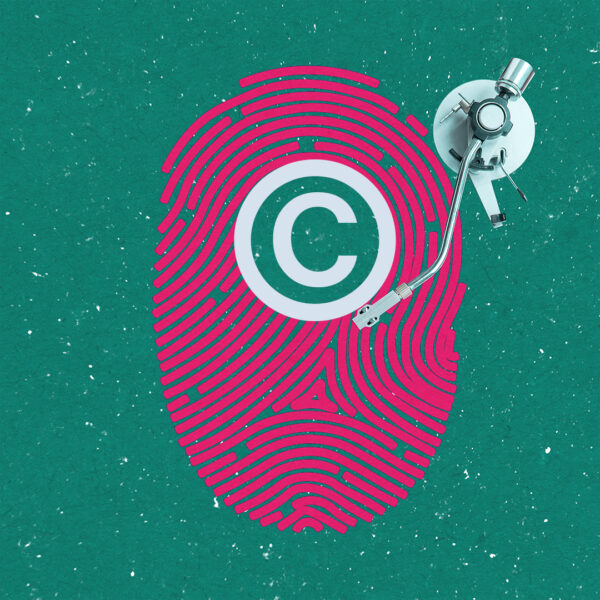Self-publishing has shaken up the literary world in the best possible way. It’s not just a trend; it’s a full-blown revolution that’s giving authors the power to bring their stories to life without waiting for a traditional publisher’s green light. In fact, the number of self-published books in the U.S. alone has seen a staggering 264% increase over the past five years, according to Bowker. This approach puts you in the driver’s seat, offering you control over every aspect of your book’s journey from concept to reader’s hands. No need to jump through the hoops of traditional publishing—self-publishing lets you bypass all that and get straight to sharing your work with the world.
The surge in self-publishing’s popularity is no fluke; it’s a reflection of how the publishing industry is evolving. In 2020 alone, over 1.7 million self-published books were released, compared to just 300,000 traditionally published books, highlighting a significant shift in the industry. Thanks to digital advancements and print-on-demand technology, getting your book out there is easier and more affordable than ever. This shift has not only opened the door for a wider variety of voices and stories but also shaken up the traditional gatekeepers of publishing. The result? A vibrant, diverse literary landscape full of fresh perspectives.
This article is your go-to guide if you’re new to the rewarding journey of self-publishing. We’re here to break down the process, share some insider tips, and give you the confidence to take your book from draft to done. Whether you’re curious about how self publishing stacks up against the traditional route or eager to dive into the nitty-gritty of marketing and distribution, we’ve got you covered. We’ll provide a roadmap to help you navigate the self-publishing scene.

Why Self-Publishing Could Be Your Best Move Yet
Self-publishing is all about taking the reins of your literary journey. It’s when you, the author, decide to publish your work on your own terms, without relying on a traditional publishing house. This route gives you complete control over everything—writing, design, formatting, distribution, marketing—you name it, you’re in charge.
The big difference between self-publishing and traditional publishing comes down to who’s holding the cards. In traditional publishing, a publishing house handles everything from editing and design to marketing and distribution. They also claim a good chunk of rights and profits. But with self-publishing, all those responsibilities—and the rewards—are yours. You get to make the calls, keep the rights, and enjoy a bigger slice of the profits.
Understanding Self-Publishing: A Quick Look Back
Self-publishing isn’t some new kid on the block; it’s been around for centuries. Back in the day, authors would sometimes fund the printing of their own works, but it was no walk in the park. Self-publihsing was often expensive, labor-intensive, and required large print runs.
Then came the digital revolution, and everything changed. The rise of print-on-demand technology and e-books has made self-publishing far more accessible and affordable. Now, instead of spending a fortune on printing, you can publish a book with just a few clicks. Plus, with online platforms offering everything from digital formatting to global distribution, reaching a worldwide audience has never been easier.
Why Go the Self-Publishing Route?
So, why do so many authors choose self-publishing? Here are a few big reasons:
- Creative Control: One of the best things about self-publishing is that you get to call the shots. In traditional publishing, editorial decisions and cover designs are often out of your hands, but with self-publishing, you’re the boss. This means you can stay true to your vision, making sure every detail—from the storyline to the cover—matches what you envisioned.
- Higher Royalties: Let’s talk money. Traditional publishers usually offer authors a small slice of the pie, with royalties typically around 10-15% for print books and up to 25% for e-books. But with self-publishing, you can earn much more—sometimes up to 70% of sales revenue. Since you’re cutting out the middleman, more of that hard-earned cash stays in your pocket.
- Speed to Market: Traditional publishing can be a slow burn. It’s not uncommon for it to take years from the time a manuscript is accepted to when the book finally hits the shelves. Self-publishing, on the other hand, is lightning-fast. Once your manuscript is ready, your book could be available to readers within weeks. This quick turnaround is especially handy for timely topics or genres where trends shift quickly.
So, if you’re ready to take full control of your book’s destiny and reap the rewards, self-publishing might just be the perfect path for you.
Traditional Publishing vs. Self-Publishing: Which Path Should You Take?
For years, traditional publishing was the go-to route for authors, but with the rise of technology and the internet, self-publishing has become a powerful alternative. Understanding the key differences between these two paths can help you decide which one is the best fit for your writing journey.
The Traditional Publishing Process
In traditional publishing, the author’s journey starts with crafting and polishing a manuscript. Once that’s done, the next step usually involves finding a literary agent. The agent’s job is to pitch your manuscript to publishing houses, hoping to land a deal. If a publisher bites, they acquire the rights to your book through a contract, which typically includes an advance payment against future royalties.
Start Your Publishing Journey FOR FREEFrom there, the publisher takes the reins. They handle everything—professional editing, cover design, typesetting, and printing. They also take charge of marketing and distribution, using their established networks to get your book into bookstores, libraries, and online retailers. They’ll launch marketing campaigns to create buzz and drive sales. But be prepared to play the waiting game—this whole process, from manuscript submission to book launch, can easily take one to two years, if not longer.
Pros and Cons of Traditional Publishing
Here’s the lowdown on what you gain—and what you might give up—by going the traditional route: Pros and cons
Benefits of Traditional Publishing:
- Professional Services: One of the biggest perks of traditional publishing is access to top-notch professional services. Publishers have teams of experienced editors, designers, and marketers who will help refine your manuscript, create an eye-catching cover, and execute marketing strategies to maximize your book’s potential.
Challenges of Traditional Publishing:
- Gatekeeping: Breaking into the world of traditional publishing can feel like trying to crack a secret code. The industry is highly selective, with agents and publishers often focused on what’s trending and what they believe will sell. This can make it tough for new or niche authors to get a foot in the door.
- Lower Royalties: When it comes to earnings, traditional publishing usually offers a smaller slice of the pie. Authors typically receive 10-15% in royalties for print books and up to 25% for e-books.
- Slower Process: The timeline from submitting your manuscript to seeing your book on shelves can be painfully slow, often taking years. This can be frustrating if you’re eager to share your work with the world sooner rather than later.
How Self-Publishing Stacks Up
Self-publishing is all about control—your control. You’re the boss, making all the creative and business decisions, from what goes into your book to how it’s designed, priced, and distributed. It’s your vision, executed your way.
- Responsibility for Quality and Marketing: With great power comes great responsibility. As a self-published author, you’re in charge of everything. This means either taking on tasks like editing, design, and formatting yourself or hiring professionals to do it. The same goes for marketing—if you want your book to sell, you’ll need to roll up your sleeves and get involved, or bring in the experts.
- Financial Considerations and Potential Earnings: Money-wise, self-publishing can be a more lucrative option. You could earn up to 70% of your book’s sales revenue, which is a significant jump from what traditional publishing offers. However, you’ll also need to cover the upfront costs—editing, design, formatting, and marketing all come out of your pocket. But if you’re willing to invest, the potential for higher returns in the long run is within reach.
Ultimately, whether you choose traditional publishing or self-publishing comes down to what matters most to you—creative control, speed to market, financial returns, or the backing of a professional team. Each path has its unique benefits and challenges, so weigh your options carefully and choose the one that aligns best with your goals as an author.

The Self-Publishing Process
Embarking on the self-publishing journey is an exciting and empowering experience, allowing you to control every aspect of your book’s creation and distribution. Here’s how to navigate the key stages of this process to ensure your book reaches its full potential.
Step 1: Prepare Your Manuscript
Start by refining your draft into a polished manuscript. Structure your content with a clear outline to maintain focus. Seek feedback from writing groups or peers, and use tools like Grammarly for editing. Establish a consistent writing routine to ensure steady progress, as the quality of your manuscript is the foundation of your book’s success. Here are some tips for writing your manuscript:
- Structure and Outline: Begin by structuring your manuscript. Whether it’s a novel, a how-to book, or a collection of poems, having a clear outline helps in maintaining consistency and focus throughout your writing.
- Seek Feedback: Don’t hesitate to seek feedback. Joining writing groups or workshops, either online or in your community, can provide valuable insights from fellow writers.
- Utilize Writing Aids: Leverage the plethora of writing aids available. This can range from software that helps with grammar and style, like Grammarly, to more comprehensive tools for manuscript formatting.
- Read Widely: Reading widely in your genre can provide inspiration and insight into successful writing styles and trends.
- Write Regularly: Develop a consistent writing habit. Setting aside dedicated writing time each day helps in progressing your manuscript and keeping the ideas flowing.
- Educational Resources: Consider online courses or guides specifically tailored for writing. Websites like MasterClass, Udemy, or local community colleges offer classes that cover various aspects of writing and storytelling.
Remember, the quality of your manuscript is the cornerstone of your book. Investing time and effort in this stage is crucial for creating a work that not only resonates with your audience but also stands out in the competitive world of self-publishing.
Step 2: Design Your Cover and Format Your Book
The cover of a book is often the first thing that captures a potential reader’s attention. It’s a crucial marketing tool that conveys the essence of your book at a glance. If you have design skills, use tools like Canva or Adobe InDesign to create it yourself. Alternatively, consider hiring a professional designer or choosing a pre-made cover.
A well-designed cover can significantly increase your book’s visibility and appeal. When considering book cover design, you have several options:
- DIY Design: For those with graphic design skills, creating your own cover is a feasible option. Tools like Adobe InDesign and Canva can be used to design covers. However, it’s important to ensure that the design is professional and aligns with your book’s content.
- Professional Design Services: Hiring a professional designer is a popular choice for many authors. Professional designers can bring your vision to life with a cover that looks both professional and appealing.
- Pre-made Covers: There are services offering pre-made covers that can be customized with your book’s title and name. This can be a cost-effective and time-saving option.
- Crowdsourcing Platforms: Platforms like 99designs allow authors to receive multiple design submissions from different designers, giving them a variety of options to choose from.
The interior layout and formatting of your book are just as important as the cover design. This aspect of book design involves arranging the text and other elements on the page, which includes choosing the right fonts, spacing, and margins. Good formatting makes a book more readable and enjoyable. Here are some key considerations:
- DIY Formatting: Authors can choose to format the book themselves using software like Microsoft Word or Adobe InDesign. This requires some technical know-how, especially for more complex layouts.
- Professional Formatting Services: Many self-publishing authors opt for professional formatting services to ensure their book meets industry standards. Professional formatters can handle the technical aspects of layout, ensuring a clean and professional look.
- eBook Formatting: Formatting for eBooks is different from print books. It requires specific software and knowledge about various eBook formats like ePub and Kindle.
- Templates: There are various templates available that can simplify the formatting process. These templates are designed with standard industry formats and can be a great starting point.
Step 3: Choose a Publishing Platform
Selecting the right platform is key to your book’s reach and success. Consider the costs, distribution channels, and royalty rates when choosing the platform you want to self-publish with.
Overview of Popular Self-Publishing Platforms:
- Amazon Kindle Direct Publishing (KDP): One of the most popular platforms, KDP allows authors to publish both eBooks and paperback books. It offers a wide reach due to Amazon’s extensive customer base and provides tools for easy eBook formatting.
- Barnes & Noble Press: This platform enables authors to publish and sell their eBooks and print books on the Barnes & Noble website. It is particularly popular for authors focusing on the U.S. market.
- Apple Books: Ideal for reaching readers who use Apple devices, this platform specializes in eBooks and offers a straightforward publishing process.
- Spines: An innovative publishing platform that combines advanced technology and publishing experts. Spines has streamlined the publishing process, offering everything you need to publish your book in less than 30 days.
Selecting the right publishing platform is a critical decision in the self-publishing process. Your choice can influence the book’s accessibility, visibility, and financial success. With numerous platforms available, each offering different services and terms, it’s essential to carefully evaluate your options to find the platform that best aligns with your publishing goals and needs.
Start Your Publishing Journey FOR FREEWhen comparing self-publishing platforms, three key factors to consider are costs, distribution, and royalties:
- Costs: Some platforms, like KDP and Smashwords, offer free uploading and listing of books, making money instead through a percentage of sales. Others may charge upfront fees for publishing or additional services.
- Distribution: Authors should consider the reach of each platform. While some, like Amazon, have a vast, global reach, others may offer more targeted distribution channels. Wider distribution can lead to greater visibility and potentially more sales.
- Royalties: Royalty rates vary by platform. For example, Amazon KDP offers up to 70% royalties on eBook sales depending on the pricing and territories. It’s important for authors to understand the royalty structure of each platform and how it aligns with their pricing strategies.
Step 4: Handle ISBN and Legal Matters
Secure an International Standard Book Number (ISBN) for your book, which is essential for distribution. Protect your work by understanding copyright laws, and consider registering your copyright for additional legal security. Ensure any external content used in your book is properly licensed, and have clear contracts with professionals you hire.
An International Standard Book Number (ISBN) is a unique identifier for books, essential for distribution and sales in most bookstores and online retailers. Here’s what authors need to know about obtaining an ISBN:
- What is an ISBN?: It’s a 13-digit number that uniquely identifies your book, allowing efficient and accurate handling by bookstores, libraries, and distributors.
- How to Get an ISBN: In many countries, ISBNs can be purchased from a national ISBN agency. In the United States, for example, they are available for purchase from Bowker. Some self-publishing platforms offer an ISBN as part of their publishing services, sometimes at an additional cost.
- Why You Need an ISBN: Having an ISBN enables easier listing, selling, and tracking of your book in various systems used by booksellers, libraries, and online retailers. It also associates the book with your name as the author, contributing to your recognition and credibility.
Understanding copyright and related legal issues is paramount for protecting your work:
- Copyright Laws: Copyright is a form of protection given to the creators of “original works of authorship,” including literary works. It grants the author exclusive rights to reproduce, distribute, and display the work.
- Securing Copyright: In many jurisdictions, copyright is automatic upon the creation of the work. However, registering your copyright, such as with the U.S. Copyright Office, can offer additional legal benefits, particularly in the case of copyright infringement.
- Legal Considerations: Be aware of legal considerations related to your content, especially if you’re including work that isn’t yours (like quotes, images, or excerpts from other works). Ensure you have the necessary permissions or licenses, and be mindful of defamation, privacy, and other potential legal issues.
- Contracts and Agreements: If you’re hiring professionals for editing, illustrations, or design, ensure you have clear contracts outlining rights and responsibilities. This clarity is crucial in avoiding disputes over rights and payments.
Step 5: Market and Distribute Your Book
Once your book is ready for publication, the next crucial steps are marketing and distribution. These aspects are vital to ensure that your book reaches your target audience and achieves the desired impact in the market.
A well-thought-out book marketing sales plan is essential for the success of any self-published book. Here’s how to approach it:
- Identify Your Target Audience: Understand who your book appeals to and tailor your marketing strategies to this audience.
- Establish an Online Presence: Create or enhance your online presence through a personal website, social media platforms, and author profiles on popular book review sites.
- Email Marketing: Build an email list to connect with readers and send updates about your book launch and other news.
- Content Marketing: Utilize blogs, articles, podcasts, or videos related to your book’s content to engage with your audience.
- Book Launch and Promotions: Plan a launch event, which could be online or in-person. Consider offering promotions like free chapters, discounted prices, or giveaways.
- Leverage Social Media: Utilize social media platforms for promotion. Regular posts, book teasers, and engaging with your audience can significantly boost visibility.
- Seek Reviews: Reach out to bloggers, book reviewers, and influencers who can help generate buzz about your book.
- Advertising: Consider using paid advertising options on platforms like Google Ads, Facebook, or Amazon to reach a broader audience.
Choosing the right distribution channels is key to making your book accessible to your audience:
- Online Retailers: Platforms like Amazon, Barnes & Noble, and Apple Books are primary channels for both eBooks and print books. Ensure your book is available on these platforms to reach a wide audience.
- Bookstores: Getting your book into physical bookstores can be challenging as a self-published author but is not impossible. Local bookstores are often more accessible and may be open to stocking your book.
- Libraries: Libraries can be an excellent avenue for exposure. Reach out to local libraries to see if they would be interested in stocking your book or hosting a reading event.
- Direct Sales: Consider selling directly through your website or at events like book fairs, conventions, or local markets.
- Global Distribution: If your target audience is global, ensure that your distribution channels cater to international markets. This might involve additional considerations like translations or adjusting marketing strategies for different regions.
Step 6: Post-Publication Efforts
The journey of a self-published book doesn’t end with its release. The post-publication phase is crucial for maintaining momentum and ensuring long-term success. This stage focuses on gathering reviews and feedback, and implementing ongoing marketing and promotion strategies.
- Encourage Reviews: Reach out to readers who have purchased your book and encourage them to leave reviews on platforms like Amazon, Goodreads, and other online bookstores. Positive reviews can significantly boost your book’s credibility and appeal.
- Engage with Readers: Use social media, email newsletters, and your author website to engage with your audience. Open and responsive communication can lead to valuable feedback and foster a loyal reader base.
- Utilize Feedback: Constructively use the feedback and reviews to improve your writing and marketing strategies. Understanding what readers liked and what they didn’t can guide you in future projects.
- Book Clubs and Reading Groups: Engage with book clubs and reading groups. These platforms can provide insightful feedback and help spread word-of-mouth recommendations.
Ongoing Marketing and Promotion Strategies:
- Continuous Online Presence: Maintain an active online presence through social media, blogging, and email newsletters. Regular updates about your work and related content keep your audience engaged.
- Network and Collaborate: Network with other authors, bloggers, and industry professionals. Collaborations can open up new avenues for promotions and audience reach.
- Participate in Literary Events: Attend book fairs, literary festivals, and author readings. These events provide opportunities to promote your book, network, and learn from others in the industry.
- Explore Paid Promotions: Depending on your budget, consider investing in paid advertising campaigns or promotional services that can increase your book’s visibility.
- Update Your Book: Based on reader feedback and new developments in your field (especially for non-fiction), consider updating your book and releasing a new edition.
- Monitor Sales and Adjust Strategies: Keep an eye on your book’s sales performance. Use this data to adjust your marketing and distribution strategies as needed.
- Plan for the Next Book: Leverage the experience and audience you’ve built for your next book. Starting the hype early can help you maintain your reader base’s interest.

The Self-Publishing Process with Spines
Embarking on the self-publishing journey is an exciting yet challenging endeavor. Spines simplifies this process by offering a streamlined, innovative publishing platform that combines the expertise of seasoned publishing professionals with cutting-edge technology. This unique approach ensures that every aspect of bringing your book to life is handled with precision and care.
From the moment you upload your manuscript, Spines guides you through each crucial step—editing, cover design, formatting, and beyond. What sets Spines apart is its seamless blend of human expertise and advanced tools, making the entire process more accessible and efficient for authors. The platform’s intuitive interface allows you to easily manage the publishing process while benefiting from professional services that refine your book to its highest potential.
Once your book is polished and ready, Spines takes care of global distribution, ensuring your work reaches readers on major platforms like Amazon and Apple Books. With Spines, you can focus on your creativity, confident that the technical and logistical aspects are expertly managed, making your self-publishing journey as smooth and successful as possible.

Essential Tips for Successful Self-Publishing
Self-publishing is more than just putting your words on paper; it’s about strategic planning, professionalism, and effective marketing. Here’s how to navigate this journey with success:
1- Plan and Research Thoroughly
Start by understanding your market and audience. Before you write, research the genres and trends that align with your book’s content. Knowing your target readers helps you tailor your writing and marketing efforts to their preferences, increasing your book’s appeal. Additionally, learn from the experiences of successful self-published authors. Study their strategies and lessons—they often share their journeys through blogs, interviews, or books, offering valuable insights for your own path.
2 – Maintain Professionalism
Treat your self-publishing project with the same seriousness as traditional publishing. Invest in professional editing, a compelling cover design, and effective marketing. Quality is key—well-written content, a polished appearance, and a strong marketing strategy can significantly boost your book’s credibility and appeal. Also, establish a professional online presence. Create an author website, maintain active social media profiles, and build your presence on platforms like Amazon and Goodreads. This helps you connect with readers and build your brand.
3- Master Marketing and Networking
Use social media and author platforms to promote your book and engage with your audience. Regular updates, insights into your writing process, and relevant content keep your followers interested and invested. Networking is also crucial. Connect with other authors and industry professionals by joining writers’ groups, attending literary events, and participating in online communities. These connections can lead to collaborations, cross-promotions, and valuable advice.
4- Embrace Continuous Learning and Adaptation
The publishing industry is constantly changing, so staying informed is essential. Keep up with the latest trends in publishing, marketing, and technology to make informed decisions. Be open to adapting to new platforms, formats, and reader preferences. Flexibility and a willingness to learn will help you stay relevant and successful in the ever-evolving world of self-publishing.
By following these tips, you’ll be well-equipped to navigate the self-publishing process and maximize the impact of your book.
Turning Dreams into Published Realities
Self-publishing is a powerful way to take control of your creative journey and bring your literary dreams to life. As we’ve covered in this guide, the process involves key steps—from preparing your manuscript and designing your book to choosing the right publishing platform. It also means navigating the complexities of ISBN registration, legal considerations, and effective marketing strategies.
But the work doesn’t stop once your book is published. Success in self-publishing requires gathering reviews, staying active in marketing, networking with peers, and adapting to the constantly evolving publishing landscape. Self-publishing isn’t just about getting a book out there—it’s about building your brand, connecting with readers, and continuously growing as both a writer and a marketer.
The rise of self-publishing has opened up the literary world, allowing diverse voices to reach a global audience. With the right mindset, tools, and dedication, anyone can turn their ideas into a published book. While the path can be challenging, it’s also incredibly rewarding. By embracing these challenges and staying committed, you can successfully navigate the self-publishing world and make your mark in the literary community.
The world of self-publishing is full of opportunities. With the insights provided in this guide, you’re ready to take the leap. Whether you’re a first-time author or a seasoned writer exploring new avenues, the world of self-publishing is waiting for your story. So, take that first step, embrace the journey, and let your voice be heard.
Start Your Publishing Journey FOR FREE








